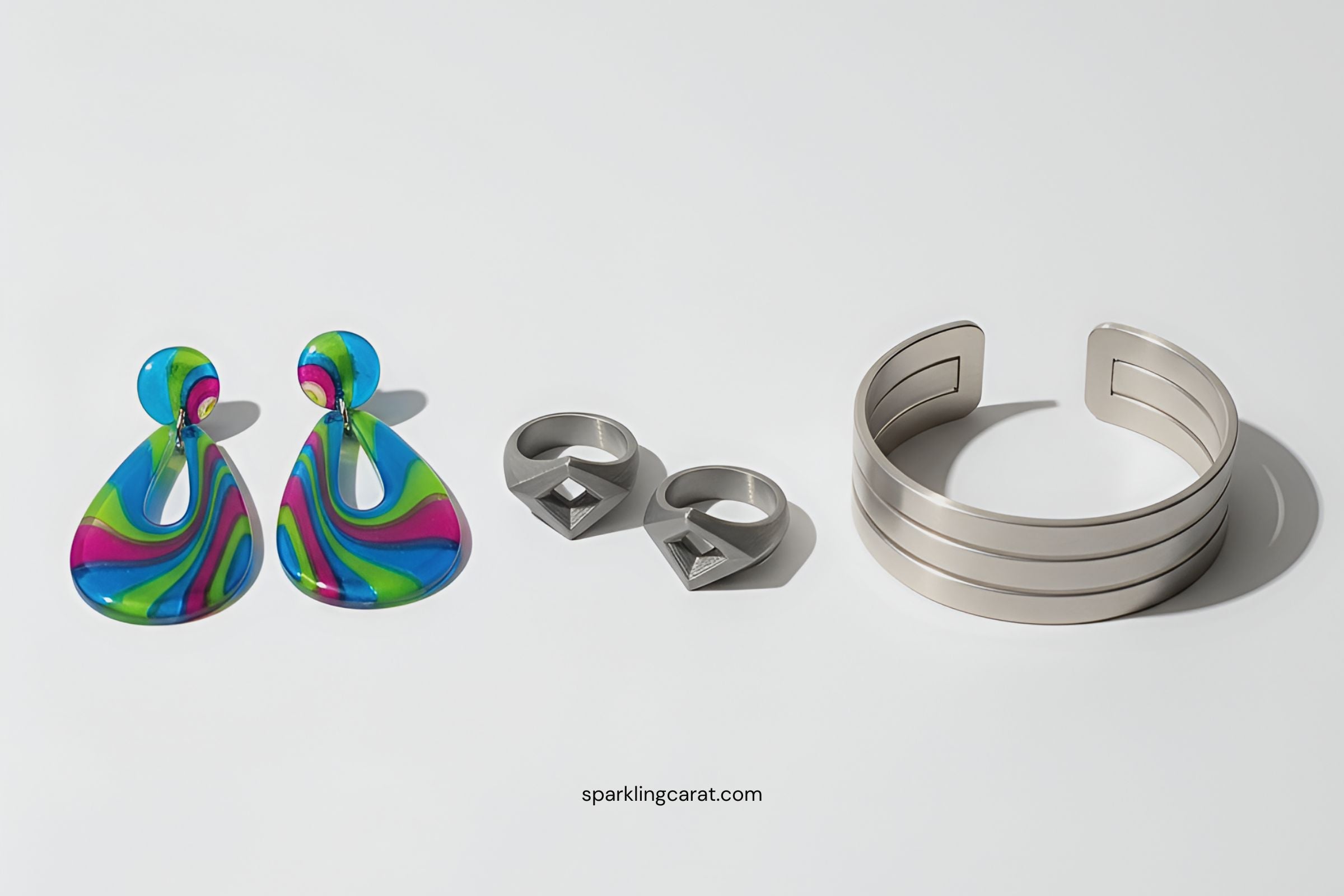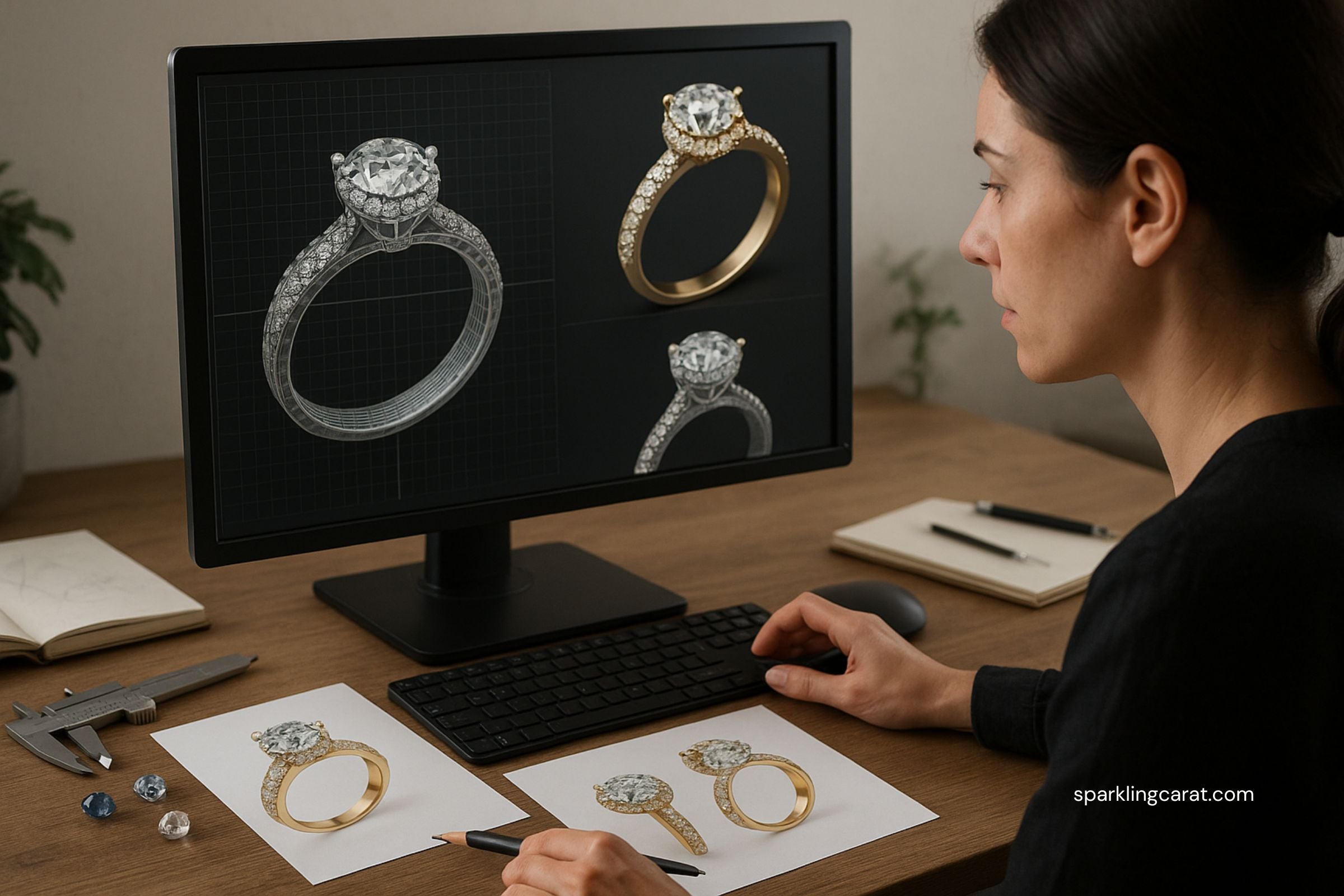High-Fidelity Virtual Try-On: The Future of Jewelry Shopping
In 2025, jewelry shopping is undergoing a digital renaissance. As consumers increasingly turn to e-commerce for luxury goods, brands are embracing high-fidelity virtual try-on technology, an immersive way to preview pieces before buying. Unlike earlier augmented reality (AR) tools that offered grainy overlays, today’s solutions use advanced 3D modeling, photorealistic rendering, and AI-driven personalization to give shoppers an experience nearly indistinguishable from reality.
This shift is more than convenience. It represents a fundamental transformation of how we discover, try, and purchase jewelry. For retailers, virtual try-ons reduce returns, boost conversion rates, and allow global audiences to experience products without visiting a store. For customers, it offers confidence, customization, and interactive fun, aligning perfectly with rising trends like Smart Jewelry & Tech: The Rise of Functional, Stylish Wearables and Innovative Materials in Jewelry: Bio-Resins, 3D-Printing & Recycled Alloys.
The Evolution of Jewelry Try-On
Traditionally, trying on jewelry was a tactile, in-store ritual. With the rise of online shopping, customers often hesitated to purchase high-value pieces without seeing them on their skin. Early AR solutions, like simple webcam overlays, attempted to fill this gap but were limited by:
-
Poor lighting adaptation
-
Low-resolution models
-
Inaccurate sizing and scaling
High-fidelity virtual try-ons now integrate real-time 3D scanning, advanced facial and hand mapping, and realistic material rendering. Customers can view how a diamond sparkles under different lighting or how a necklace drapes across their collarbone, all from a smartphone or laptop.
How High-Fidelity Virtual Try-On Works
1. Photogrammetry & 3D Scanning: Brands create hyper-detailed 3D models of each jewelry piece, capturing reflections, textures, and dimensions.
2. AI & Computer Vision: The system maps the user’s ear, finger, neck, or wrist to exact proportions for accurate placement.
3. Real-Time Rendering: Using GPU acceleration, metals and gemstones react to light naturally, showing true sparkle, shadow, and color.
4. Customization & Filters: Users can switch metals, stone shapes, or carat sizes instantly, similar to how Lab-Grown Diamonds Go Mainstream: Ethics Meets Elegance enables more customization in real life.
5. Cross-Platform Integration: From brand apps to social media AR filters, try-ons are accessible anywhere.
This technology creates a hybrid experience of e-commerce convenience and boutique-level personalization.
Benefits for Consumers
-
Confidence in Purchases: See exactly how a ring fits or a pendant lays before buying.
-
Expanded Access: Try on high-end pieces from global brands without traveling.
-
Customization: Experiment with metal types (see Mixed Metal Magic: How 2025 Is Breaking Jewelry Rules), gemstone colors, or even layered looks like Ear Stacking as Self Expression: Curating Your Own Ear Curation.
-
Reduced Buyer’s Remorse: When expectations match delivery, returns decrease.
-
Fun & Shareability: Users can screenshot try-ons to get feedback from friends or post on social media.
Benefits for Retailers
-
Higher Conversion Rates: Virtual try-on features can double or triple add-to-cart actions.
-
Lower Returns: Accurate visualization reduces mismatches between expectation and reality.
-
Global Reach: Customers anywhere can interact with collections 24/7.
-
Data Insights: Track which styles, metals, and stones users try most frequently to refine inventory.
-
Storytelling Opportunities: Embed educational content (e.g., Sustainable Jewelry Spotlight: Recycled Metals & Fair-Trade Sourcing) directly into the try-on experience.
Virtual Try-On Meets Sustainability
Interestingly, virtual try-ons also support sustainability. By enabling customers to make better-informed choices, they reduce shipping emissions from returns and limit overproduction. Brands can showcase pieces made from Innovative Materials in Jewelry: Bio-Resins, 3D-Printing & Recycled Alloys without maintaining large physical inventories. Virtual catalogs can also highlight sourcing transparency and ethical practices alongside the product view.
Styling & Future Features
Expect to see:
-
Mixed Reality Showrooms: Where customers blend real-life accessories with virtual pieces to visualize layered looks.
-
Haptic Feedback: Gloves or rings that let you “feel” the weight or texture of a virtual piece.
-
AI Styling Assistants: Suggest combinations (e.g., pairing Chunky Gold Chains: A Modern Reinvention of ’80s Glamour with delicate pendants).
-
Virtual Gifting: Send a friend a try-on link before buying them an engagement ring or heirloom.
For shoppers, this opens up endless experimentation. For brands, it fosters community and loyalty.
Getting Started with Virtual Try-On
Consumers can look for brands already adopting this technology. Many luxury houses and innovative independents have begun rolling out high-fidelity AR apps. Some jewelers even integrate virtual consultations with stylists or gemologists, blending human expertise with digital convenience.
Conclusion
High-fidelity virtual try-on is no longer a novelty, it’s the future of jewelry shopping. By combining photorealistic 3D models, AI-driven personalization, and cross-platform accessibility, this technology enhances trust, creativity, and sustainability for both customers and retailers. As it evolves, expect jewelry shopping to become as immersive and interactive as gaming, without sacrificing the craftsmanship and storytelling that make jewelry special.






Leave a comment
This site is protected by hCaptcha and the hCaptcha Privacy Policy and Terms of Service apply.